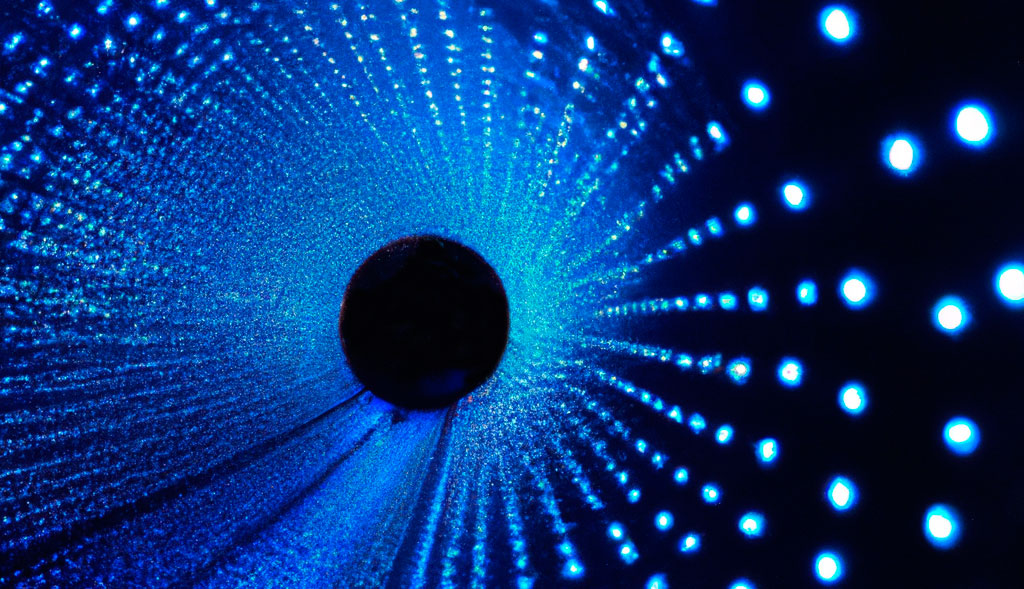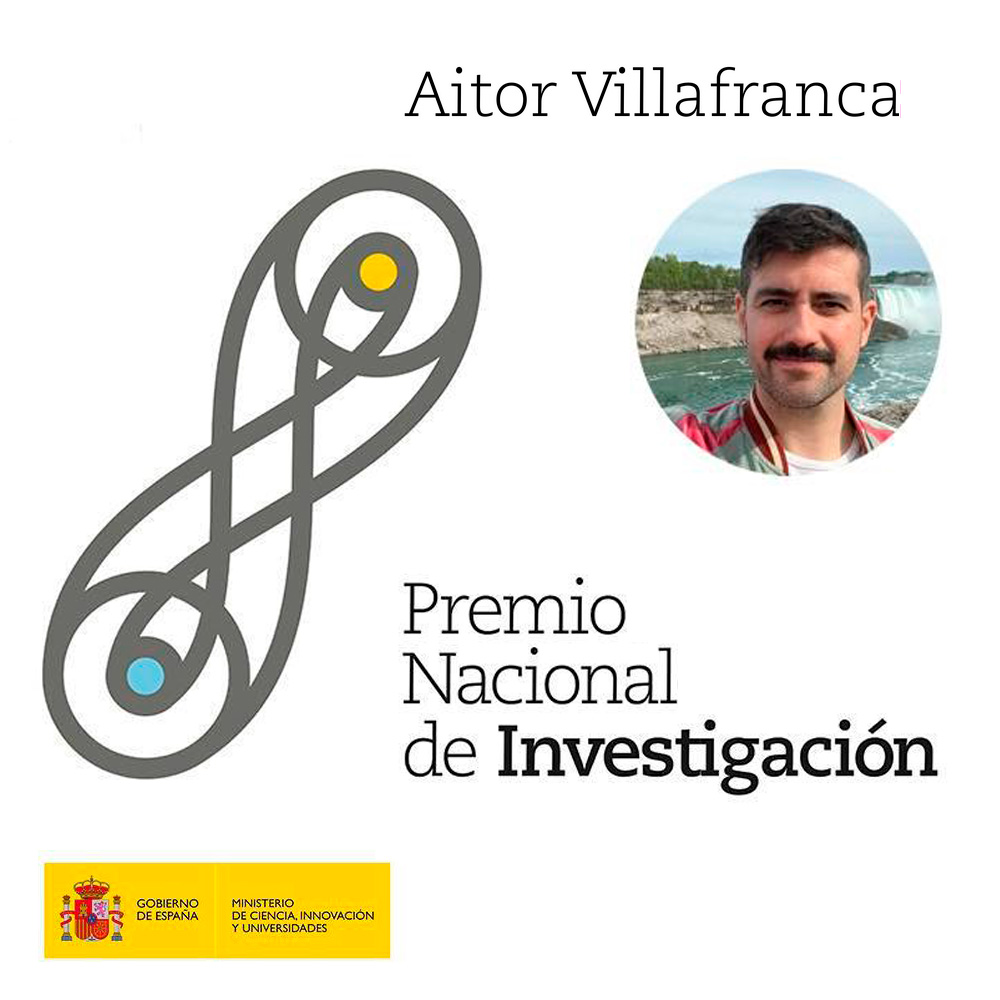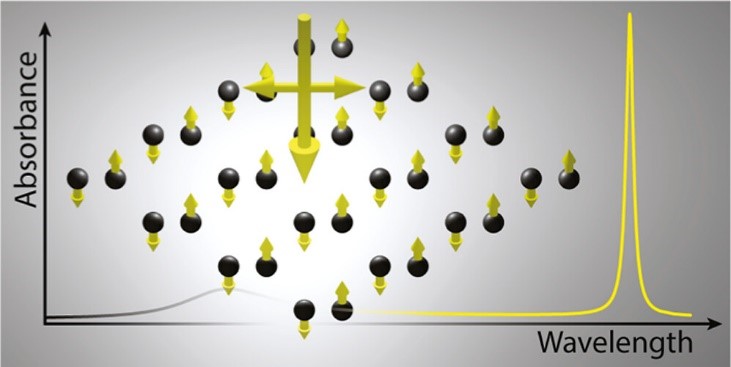Highly directional single-photon source
-
This work offers a promising solution to efficiently generate highly directional single photons, with applications in quantum computing, cryptography, or metrology
-
The design is based on an application of the Purcell effect.
Madrid / July 12, 2023
A team of researchers from the Institute of Optics of CSIC and the Institute of Photonic Sciences (ICFO) of Barcelona has proposed a new design to implement highly directional single-photon sources, which constitutes an improvement over currently existing quantum technologies.
The generation of single photons along well-defined directions requires highly sophisticated systems, but this new proposal offers a simpler and more efficient solution.
The generation of single photons along well-defined directions requires highly sophisticated systems, but this new proposal offers a simpler and more efficient solution.
Latest news

Artist’s representation of the interior of the optical guide / Instituto de Óptica
The work proposes the use of a quantum emitter (molecule or atom that emits a single photon when it transitions to a lower energy state) inserted into a one-dimensional waveguide formed by a periodic structure. This structure is designed to support a single guided mode of light in the spectral range of the quantum emitter. As a result, the photons emitted by the quantum emitter are preferably coupled to this waveguide mode, resulting in high directionality and reducing the temporal uncertainty of the emission by more than two orders of magnitude.
Single photon sources are fundamental components in quantum optical devices used nowadays in computing, cryptography, and quantum metrology. These devices use quantum emitters that, after excitation, produce single photons with a probability close to 100% and emission times on the order of a few to tens of nanoseconds.
The quality of a single photon source depends on its ability (i) to extract single photons with high efficiency, (ii) to reduce emission time uncertainty, (iii) to increase the repetition rate, and (iv) to rule out two-photon events.
This study presents a novel approach that can improve extraction efficiency and reduce emission time uncertainty by exploiting the Purcell effect. This effect consists of the modification of the emission probability of a quantum emitter due to the interaction with its environment.
Unlike previous approaches that require two- or three-dimensional structures to obtain a guided mode, this new approach only needs a one-dimensional system. The proposed design can be implemented with a wide variety of materials and is very robust to manufacturing imperfections. Furthermore, as a one-dimensional system, it has a much smaller footprint than previously proposed two-dimensional photonic crystal structures, providing advantages for the integration of the device on a chip.
In principle, the quantum emitter located in the waveguide emits photons along both directions of the waveguide, but there are strategies to emit the photons in only one direction. For example, it is possible to use circularly polarized emitters (in which the electric field of the photon rotates as the light propagates) or modify one end of the waveguide to implement a Bragg reflector.
Although this study has focused on waveguides formed by spherical nanostructures, the results can be readily applied to other types of elements, such as periodic corrugations in a rectangular waveguide.
This is a research work by scientists Alejandro Manjavacas from the “Daza de Valdés” Institute of Optics of CSIC and F. Javier García de Abajo from the Institute of Photonic Sciences (ICFO) of Barcelona.
Single photon sources are fundamental components in quantum optical devices used nowadays in computing, cryptography, and quantum metrology. These devices use quantum emitters that, after excitation, produce single photons with a probability close to 100% and emission times on the order of a few to tens of nanoseconds.
The quality of a single photon source depends on its ability (i) to extract single photons with high efficiency, (ii) to reduce emission time uncertainty, (iii) to increase the repetition rate, and (iv) to rule out two-photon events.
This study presents a novel approach that can improve extraction efficiency and reduce emission time uncertainty by exploiting the Purcell effect. This effect consists of the modification of the emission probability of a quantum emitter due to the interaction with its environment.
Unlike previous approaches that require two- or three-dimensional structures to obtain a guided mode, this new approach only needs a one-dimensional system. The proposed design can be implemented with a wide variety of materials and is very robust to manufacturing imperfections. Furthermore, as a one-dimensional system, it has a much smaller footprint than previously proposed two-dimensional photonic crystal structures, providing advantages for the integration of the device on a chip.
In principle, the quantum emitter located in the waveguide emits photons along both directions of the waveguide, but there are strategies to emit the photons in only one direction. For example, it is possible to use circularly polarized emitters (in which the electric field of the photon rotates as the light propagates) or modify one end of the waveguide to implement a Bragg reflector.
Although this study has focused on waveguides formed by spherical nanostructures, the results can be readily applied to other types of elements, such as periodic corrugations in a rectangular waveguide.
This is a research work by scientists Alejandro Manjavacas from the “Daza de Valdés” Institute of Optics of CSIC and F. Javier García de Abajo from the Institute of Photonic Sciences (ICFO) of Barcelona.
Comunication IO-CSIC
cultura.io@io.cfmac.csic.es
Related news
Aitor Villafranca, Spanish National Research Award 2024
He has received the award in the Angela Ruiz Robles Category, in Knowledge Transfer These awards are the most important recognition in Spain...
Normal Incidence Excitation of Out-of-Plane Lattice Resonances in Bipartite Arrays of Metallic Nanostructures
Madrid / January 15, 2024A team of researchers from the Institute of Optics of the CSIC and the Italian Institute of Technology have achieved a new...
Tunable bound states in the continuum in active metasurfaces of graphene disk dimers
Madrid / December 12, 2023A research team made up of researchers from the Institute of Structure of Matter and the Optics Institute of the CSIC, the...




